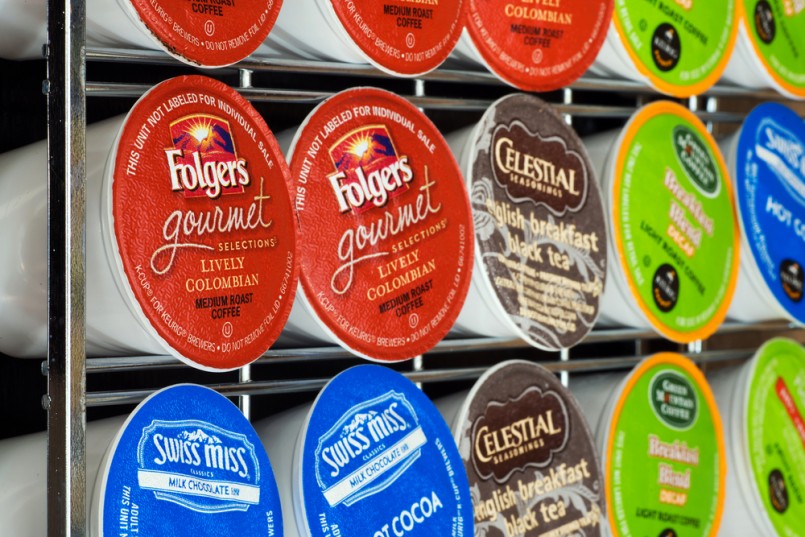Environment
Why Are K-Cups About To Get Banned?
Why Are K-Cups About To Get Banned?
K-cups seem so harmless. They make coffee a breeze, and come in so many fun flavors. And there seems to be no stopping Keurig, which sold 9.8 billion portion packs in 2014.
But that brings up estimates that the amount of sold Keurig cups in 2013 would be able to circle the Earth’s equator 10.5 times. The Atlantic cited estimates of these little cups circling the Earth more than 12 times in 2014. The fact is we’re drowning in these things, which aren’t as recyclable as everyone thinks. So, why are k-cups about to get banned?
The cups themselves are a complicated mixture of different materials that are hard to separate and even harder to recycle. The cups consist of plastic #7, which is not recyclable in a lot of places. Many curbside programs won’t touch it. Plastic #7 is a vague classification that means it can’t be described by the other numbered labels or it has a combination of other plastics. It’s sort of like the unwanted child of the recyclables world. Plus, the makeup of the cups doesn’t help, since each one is made up of a filter, contains coffee grounds and has a foil top, making them difficult to separate and process.
So enter the environmental lash out. #killthekcup has been on a mission to get the Keurig machine out of the public lexicon for several years now, or at least put pressure on Keurig to change its ways. There’s only been a promise from Keurig that it would have a more recyclable cup by 2020, while mountains of these things continue to pile up. It’s a far-off date the company is still holding to, despite the inventor of k-cups divulging to The Atlantic that sometimes he even regrets inventing the things.
Meanwhile, it looks like such 2020 promises may not be enough. News stories abound about the financial trouble the company has been in after its environmental backlash. The company sold 7% less machines during the 2015 holiday season than it did the year before. That marks six quarters the company has watched unit sales drop. And in May of 2015, the company’s stocks plummeted, falling 10% after a 23% fall in sales during the first quarter of that year.
But not all areas of the world are ready for Keurig to make its bed and then lie in it as its sales drop. Hamburg in Germany flat out banned k-cups. Being the second-largest city in Germany, it could create a dent for the already questionable future of k-cups. The k-cups were banned in the beginning of the year as part of a sweeping green initiative for the city’s state-run buildings. K-cups won’t be available at these buildings, nor will bottled water or plastic utensils.
So where does that put k-cup use for the Average Joe? The short answer is to stop using them. If things keep going at their current pace, we may not have much of a choice in the matter. Better to adapt now and save the planet. Plus we’ll save money. After all, even the creator of Keurig won’t use the machines. He’s on record with The Atlantic as stating that they’re too expensive.
Yet what if you just can’t cut your k-cup habit? Buy a reusable one, like Keurig’s My K-Cup that allows you to add your own coffee grounds, or find a biodegradable option like San Francisco Bay OneCup.






0 comments